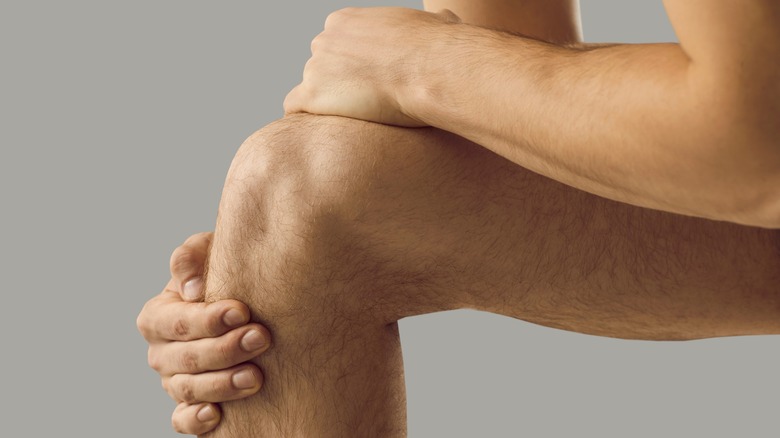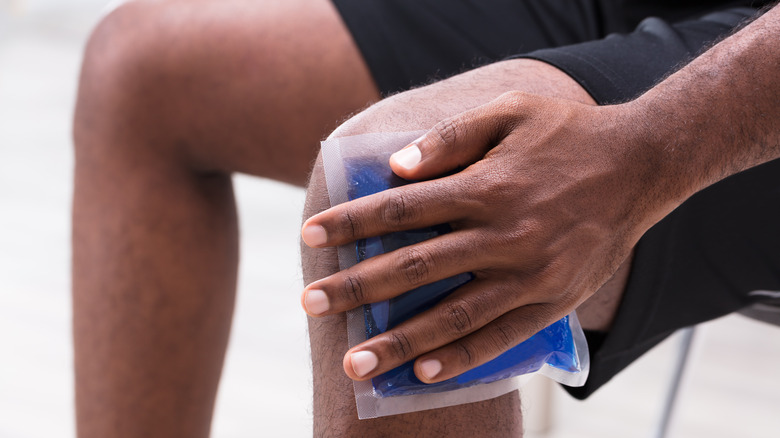The Real Reason Some People Have An Extra Bone In Their Knee
The kneecap, medically called the patella, is the bone located at the front of the knee, according to Healthline. Shaped like a triangle, the patella is essential to the protection of the knee, strengthens the power of the knee joint, and its lubricating surface even provides nourishment for the joint as well (via Verywell Health). While the patella is generally only made up of one singular bone that forms during the fetal stages of development and into childhood, about 1 in 50 people have a patella made up of two bones, known as a bipartite patella, says knee specialist Dr. Robert LaPrade.
Affecting roughly 1% to 2% of the population, a bipartite patella can exist in either one or both knees. For people who are born with the condition, this is because the two bones remain separate instead of fusing together during childhood. However, the two bones remain tethered together by connective tissue (per Humpal Physical Therapy). The condition itself normally doesn't cause any symptoms or pain. In fact, it's often only diagnosed through an X-ray exam for an alternate injury.
However, should the connective tissue of the bipartite patella become inflamed due to injury or strain, pain and swelling can result.
What to do when the connective tissue becomes inflamed
The presence of a bipartite patella is often detected through medical exams of an alternate knee injury due to sports such as ice skating, soccer, and football, according to Dr. Robert LaPrade. In the event of an injury to the connecting tissue, known as the synchondrosis, a person may experience tenderness, pain, swelling, a feeling of instability, or the development of a bony ridge along the outside of the kneecap (via Healthline).
When the connective tissues of a bipartite patella become inflamed, treatment options are generally non-surgical. Inflammation is often experienced as a dull ache, according to Humpal Physical Therapy. As treatment, experts often recommend icing the area, resting the knee, and using nonsteroidal anti-inflammatory drugs (per Healthline). In some cases, physical therapy or a knee brace may also be helpful. If the pain hasn't eased within six months, doctors may suggest surgical options such as replacing the connective tissue with a screw, or even removing the smaller knee bone altogether.


